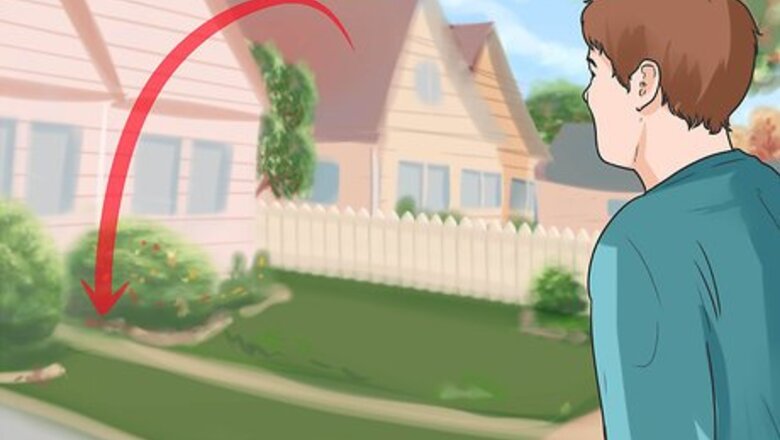
views
X
Trustworthy Source
American Kennel Club
The American Kennel Club (AKC) is a purebred dog pedigree registry in the United States. The AKC advocates for the responsible ownership of dogs and promotes purebred dog events, such as the Westminster Dog Show.
Go to source
Housebreaking Your French Bulldog
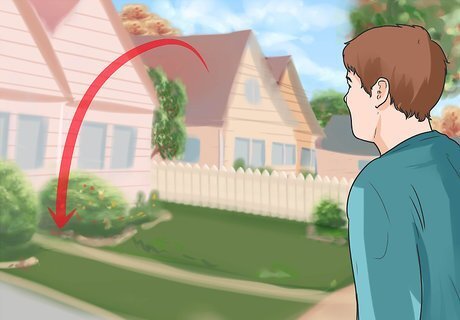
Decide where you want your dog to toilet. Avoid letting your dog get familiar with toileting indoors if you'd like it to toilet outside. If you have a place in your yard where you'd like your dog to toilet, bring it to the spot immediately. Before you even go into your house, let it sniff around the yard until your dog urinates or defecates. When your dog does urinate or defecate, give your dog lots of verbal praise and attention so your dog associates going to the bathroom outside with being praised.
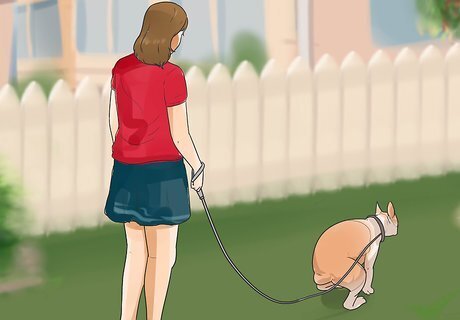
Start training right away. In order to make your French bulldog a good household member, begin potty training your dog as soon as you get it. If you wait to begin training and let your dog toilet on puppy pads, it will take longer to potty train it and you dog will be confused about where to toilet. You'll need to be very consistent and encouraging when you begin housebreaking your French bulldog.
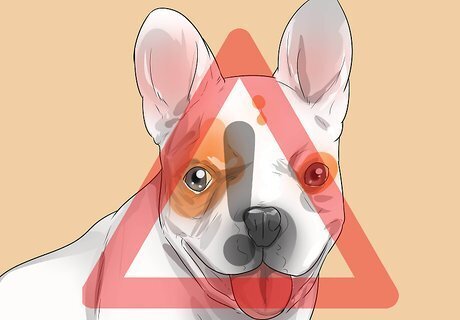
Watch for signs that your dog needs to toilet. Most dogs will show signs that they need to toilet, so watch your French bulldog to become familiar with your dog's specific signs. You should also be in the habit of frequently giving it the opportunity to toilet. Signs that your dog needs to toilet include: Panting Pacing or sniffing around the house Barking Wandering off to a quiet area
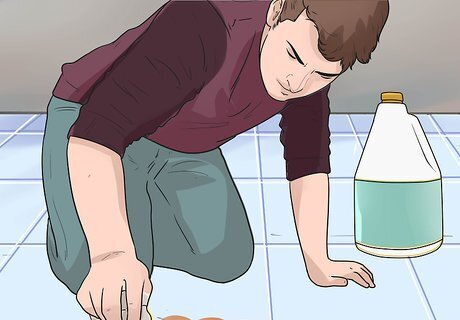
Clean up messes immediately. If you didn't notice your dog's cue to toilet or your dog accidentally goes in the house, thoroughly clean up the mess. You'll need to use a product designed for pet messes or a special pet-urine enzymatic cleaner. This will completely remove the scent of urine so your dog doesn't return to the same spot to toilet later. Don't scold or hit your dog for having an accident. Your dog won't be able to associate the punishment with the action (toileting inside) and your dog will learn not to trust you.
Using a Crate to Housebreak Your Dog
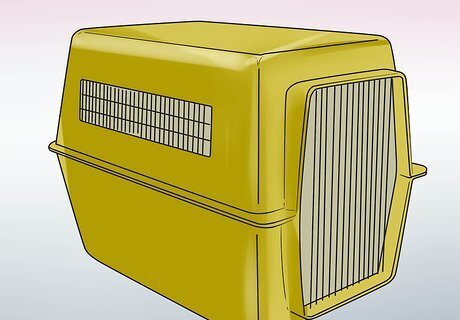
Get a crate. Choose a crate that will be large enough for your French bulldog. Your dog should be able to stand normally without a hunched back inside the crate. If your French bulldog isn't fully grown, allow enough room for your puppy to grow into its full adult size. Your dog should also be able to turn around comfortably. Using a crate is one of the best ways to housebreak your French bulldog. The crate also gives your dog a safe space when your dog needs to retreat or you have to leave your dog alone for a little bit.
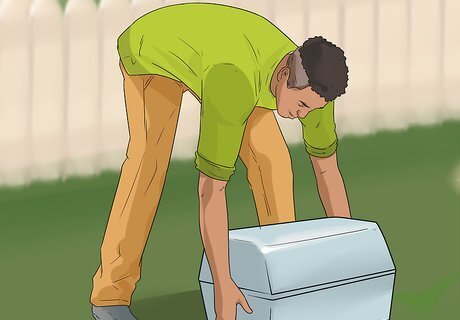
Set up the crate. Assemble the crate (if needed) and place a crate pad or soft blanket in the bottom. To encourage your French bulldog to use the crate, put a few healthy treats in the crate, but don't leave food or water in it. Your dog should feel comfortable and safe in its crate. You should place the crate somewhere quiet, but also where your dog can interact with people. Your dog shouldn't feel isolated or punished when your dog's in the crate.

Introduce your dog to the crate. Leave the kennel door open and encourage your dog to enter the crate on its own. Let your dog do this often for several days and then shut the door behind your dog. Leave your dog in the crate for 10 minutes and sit next to your during this time. Let your dog out when your dog's quiet. Never let your dog out if your dog is whining or pawing at the door of the crate.
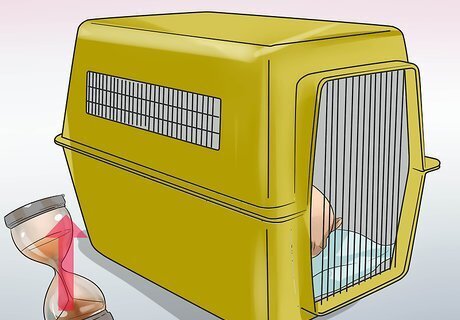
Increase the amount of time your dog spends in the crate. Slowly keep your dog in the crate for longer periods of time. Once you've worked up to 30 minutes, you can leave it in the crate for short periods of time. Older dogs can stay in the crate for up to 4 hours at a stretch (which is how long they can hold their bladders). Never leave your dog in a crate for longer than this or use the crate as a punishment. If you do, your dog may resist going in the crate.

Train your dog to use the crate at night. Make sure your dog's crate is in a quiet spot where people won't be coming and going. To crate your dog overnight, play with your dog a lot so your dog is tired and set a treat in the crate. Close the door once your dog's in the crate and leave the room. Don't reenter the room while your dog is still crying. Remember that you'll still need to get up in the night to let your dog go out and toilet. If your puppy is under 4 months old, let your dog out every 2 to 3 hours. If your dog is older, you should let your dog out at least every 4 hours.
Socializing Your French Bulldog
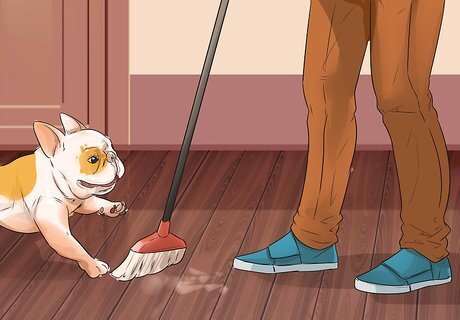
Expose your dog to your household. As soon as you get your French bulldog, make your dog part of your family and household. Don't feel like you need to shield it from noisy activities or energetic family members. Just make sure the activity or noise is non-threatening. For example, don't tease your new dog by chasing it with a broom or vacuum. This will cause it to fear the noise or you.
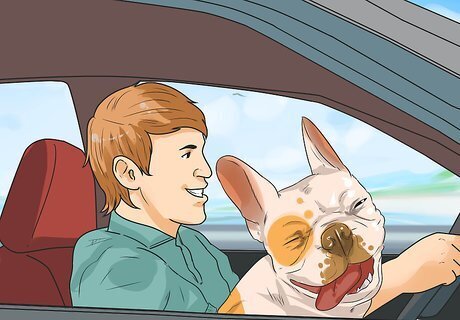
Take your dog for a ride. Your French bulldog should be comfortable with riding in vehicles. This way, if you ever need to take it to the vet, your dog won't be traumatized. Riding in a car will also introduce your dog to street sights and sounds from the car window. To keep you and your dog safe, your dog should be secured in a harness or carrier while you're driving. Just remember not to take your dog along in the car if it's a very hot or humid day. Dogs can die if left in a hot car, even if left alone for only a few minutes.

Take your French bulldog to the park. Choose a dog park so your dog can practice playing with other dogs and interacting with humans. Playing at the park is also a good chance for your dog to burn off some energy. Just be sure that your dog has had its first two distemper vaccines before taking it to a dog park. To prevent dog fighting and keep control over your dog, keep it on a leash.
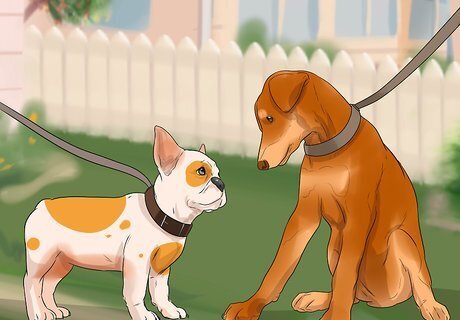
Introduce your dog to other experiences. You should try to expose your dog to as many different dogs, people, and sights and sounds as you can. If you feel like your dog needs more interaction, consider signing it up for a socialization or obedience class. Your French bulldog will get personal time with other humans and dogs while getting important training. You can find dog classes at local community centers, through 4-H clubs, or pet shops. You can also ask your vet to recommend socialization classes.
Teaching Basic Commands
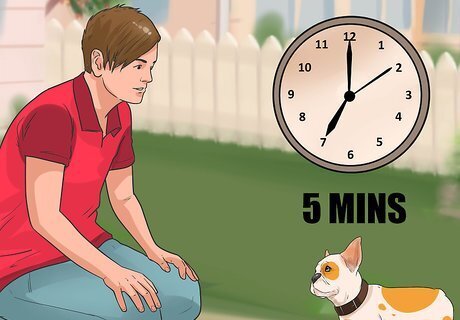
Keep the lessons short and effective. If your French bulldog is young, keep training sessions to about 5 minutes, increasing the time if your dog is older. Plan on doing 3 to 5 training sessions a day. Try to pick times when your dog isn't hungry or tired so your dog will be more focused on learning. Be consistent and patient with your dog. The lessons should build on each other, so start with simpler commands before moving on to commands that require your dog to know additional commands.
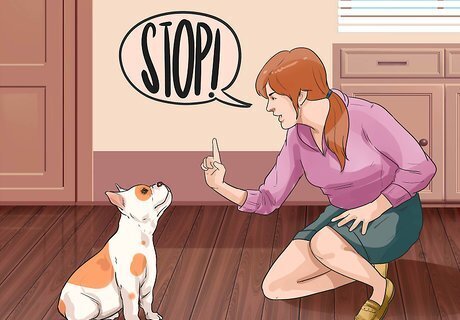
Teach your dog no or stop. This command will come in useful when you need to teach your dog not to bite or chew (natural tendencies for younger dogs). If your dog bites or nips you or you see your dog chewing, tap its nose lightly and say, "No bite" or "No chew." Remove your hand from your dog's mouth and replace it with a toy. Giving an acceptable chew toy will distract your dog and teach it what is appropriate to chew.
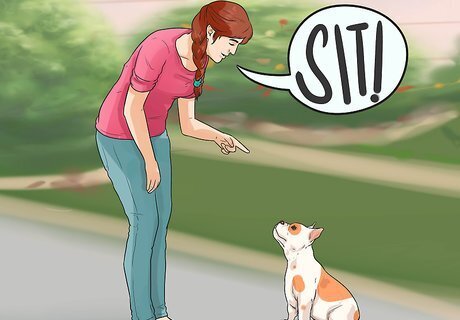
Teach your dog to sit. Have your dog stand in front of you and place a treat in your hand so your dog can see it in your palm. Firmly say, "sit" in a friendly voice while you push your dog's bottom down until your dog sits. Give your dog the treat immediately and tell it good job. Repeat this process by stepping away from your dog. Turn to face your dog and tell it to sit. Keep pushing down your dog's bottom and praising it as you did before until your dog sits on its own.
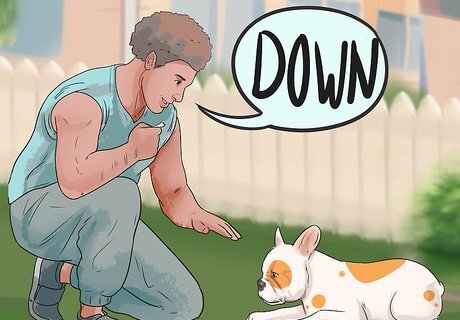
Teach your dog the down command. Place your dog in a sit position while you put a treat in your hand. Make sure your dog knows you have the treat in your hand and put your hand near its nose. Move your hand to the floor while you say "down" or "lay down." Your dog will follow your hand to the floor by starting to lay down. As soon as your dog does (or tries), give the treat and praise. Practice this command until your dog goes down consistently. If your young dog jumps to your attention or while playing, keep your dog on a leash to correct its behavior. As your dog starts to jump, command your dog to "sit" and reward. Your dog will learn not to jump on people.
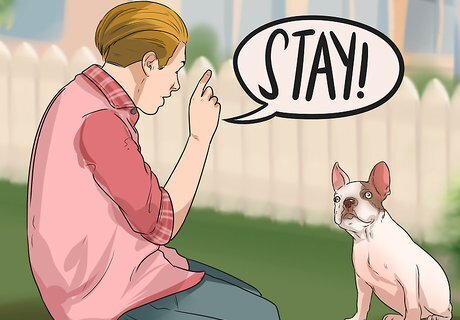
Train your French bulldog to stay. Have your dog sit and praise your dog when your dog obeys. Put your hand in front of its face like you're hand is a stop sign. Firmly say "stay" and back away slowly. If your dog starts to run to you, start again by commanding your dog to sit. Repeat the command to stay and back away again. Repeat this until your dog consistently obeys. Don't let your dog off the leash until your dog knows the stay command and follows it consistently.

Train your dog to come. Begin this command when your dog is playing or sniffing around a fenced area. Crouch down, slap your thighs and say "come" in a friendly voice. This will make your dog think you want to play and your dog will run over to play with you. When your dog does, reward it with a treat and lots of praise. Use this command when your dog is doing something potentially dangerous to get your dog to come to you quickly. Practice this command at different times when your puppy is distracted. This is a good way to test your dog's response to the command.
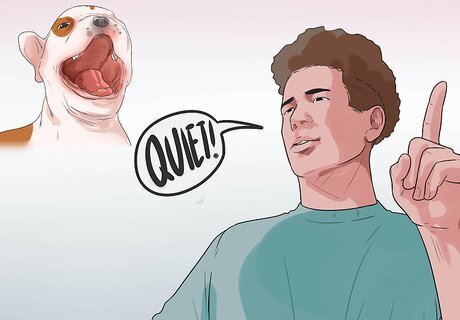
Teach the quiet command. If your dog begins barking and you need to silence your dog, keep a bag of treats handy. When your dog barks, take a treat out and say "quiet." Draw its attention to the treat and when your dog stops barking, immediately give it the reward. Giving the reward immediately helps your dog associate the command "quiet" with quieting down. It may take a while but eventually your dog will understand that you expect it to quiet down when you say quiet.
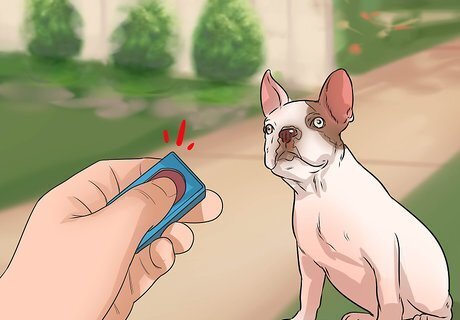
Consider clicker training your dog. Teach your dog to associate a clicking sound from a clicker device as a reward for following a command. To do this, click the device and give your dog a treat. Practice training your dog and whenever it obeys, click the device and give a treat. Eventually, your dog will associate correct behavior with the clicker sound. Once your dog is familiar with the clicker, you can wean your dog off the treats and clicking sound so that the dog just responds to the command and clicker.














Comments
0 comment